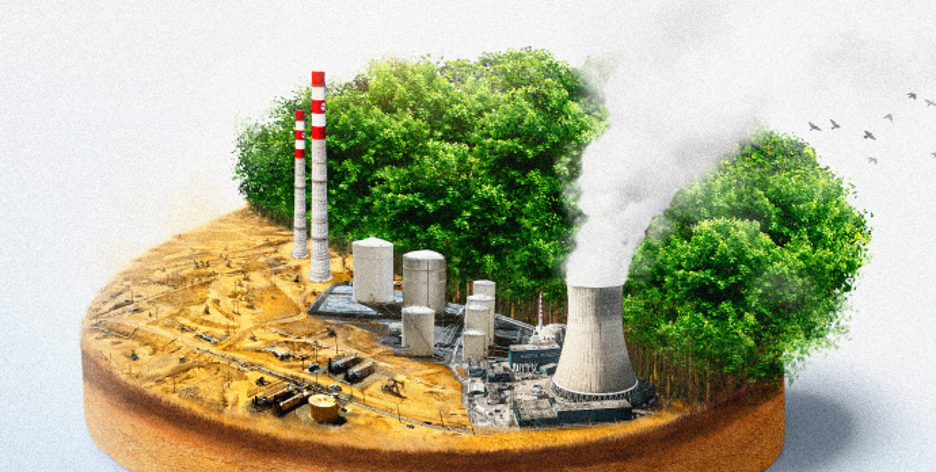Across the petrochemical sector, the rules of investment are changing. Green financing is now the defining factor in project success, with investors and regulators prioritizing initiatives that deliver measurable reductions in emissions, energy use, and environmental impact.
This shift is reshaping how projects are planned, funded, and scaled, placing sustainability at the heart of growth strategies. For forward-looking players, aligning with green finance is a gateway to capital, market advantage, and long-term resilience in a rapidly decarbonizing industry.

Criteria for Classifying Projects as “Green”
To qualify as “green,” petrochemical projects must meet widely recognized standards that go beyond surface-level claims. Investors and regulators typically assess projects against the following criteria:
- Resource efficiency: Minimizing energy, water, and material use across operations.
- Emissions reduction: Demonstrating measurable cuts in greenhouse gas emissions.
- Sustainable inputs: Using renewable feedstocks, recycled materials, or captured carbon.
- Circularity: Integrating recycling, reuse, and waste reduction into production.
- Transparency: Providing verified reporting and independent audits of environmental performance.
- Regulatory alignment: Meeting taxonomies such as the EU Green Deal or ESG frameworks.
These benchmarks ensure projects deliver real impact, building investor confidence and avoiding “greenwashing.”
Project Preparation for Green Finance
Securing green finance requires more than good intentions. Companies need well-prepared, investment-ready projects. That’s because lenders expect feasibility studies, risk assessments, and transparent environmental data before committing capital.
So, technical support facilities, often called Project Preparation Facilities (PPFs), help close this gap by guiding early-stage scoping, aggregating smaller initiatives to reach scale, and structuring blended finance models that mitigate risk.
Typical preparation steps include:
- Feasibility studies to test technical and economic viability.
- Environmental and social impact assessments to ensure compliance with sustainability standards.
- Financial structuring that blends public and private capital to reduce risk for investors.
For petrochemicals, this means aligning project design with sustainability standards from the outset, ensuring proposals meet both environmental goals and the financial rigor investors require.
Private Equity Interest in Sustainable Chemicals
Private equity interest in sustainable chemicals continues to accelerate, driven by high margins, sustainable innovation, and digital transformation. 2024 saw a surge in cross-border deals, with investors targeting mid-sized players boasting strong intellectual property (IP) and research and development (R&D).
Key themes shaping mergers and acquisitions (M&A) include sustainability, vertical integration, and advanced digital tools. Beyond financials, success also depends on leadership talent, swift integration, and cultural alignment. With record dry powder fueling transactions, the outlook for 2025 remains strong across specialty chemicals and advanced materials.
Cost of Capital Comparison: Green vs. Traditional

Green financing is increasingly cheaper than conventional capital, as investors view sustainable projects as lower-risk and more future-proof. Green bonds, for example, often carry interest rates 30–80 basis points lower than standard issues, saving millions over a project’s lifetime.
Besides that, lenders also offer preferential terms to ventures with measurable emissions reductions or circular practices. In contrast, traditional petrochemical projects face rising borrowing costs due to carbon pricing, regulatory pressures, and investor shifts toward stricter ESG benchmarks.
Anchorage Investment, led by Dr. Ahmed Moharram, exemplifies how this dynamic works in practice. With sustainability and social responsibility embedded in every project, the company adopts technologies and management practices that minimize environmental impact while engaging local communities.
Incentives and Subsidies for Low-Carbon Projects
Egypt has rolled out a robust package of incentives to attract private investment in clean energy. Developers benefit from tax deductions of up to 50%, reduced customs duties on renewable energy equipment, and preferential feed-in tariffs (FiTs) for solar and wind projects.
Land may also be allocated at discounted rates, while the “Golden License” streamlines approvals into a single step. Additional perks include cash rebates of up to 55% of taxes paid, refundable infrastructure costs, and workforce training subsidies, making low-carbon ventures far more cost-competitive.
Egypt’s Financing Landscape for Green Industry
Egypt’s green industry is supported by a growing ecosystem of local banks, investment funds, and public-private partnerships. State-owned banks like the National Bank of Egypt and Banque Misr are delivering climate finance through EBRD-backed programs.
Multilateral platforms, such as the Green Economy Financing Facility (GEFF), channel over €220 million in sub-loans for energy- and resource-efficient SME projects through partner banks, including CIB, Alexbank, and AAIB. Further, the European Investment Bank’s Green Sustainable Industry initiative offers concessional loans and grants to aid industrial decarbonization.
However, awareness gaps, regulatory complexity, and investor risk aversion continue to slow momentum. That said, government ambition, backed by Vision 2030 and enhanced green financing frameworks, points to growing opportunities for sustained private-sector engagement.
Final Thoughts
Green financing is reshaping Egypt’s petrochemical industry by lowering capital costs and unlocking opportunities for cleaner growth. With supportive policies, well-structured projects, and proactive private investment, the sector can accelerate its shift toward sustainable industrial practices, positioning Egypt as a competitive hub for low-carbon petrochemicals in global markets.